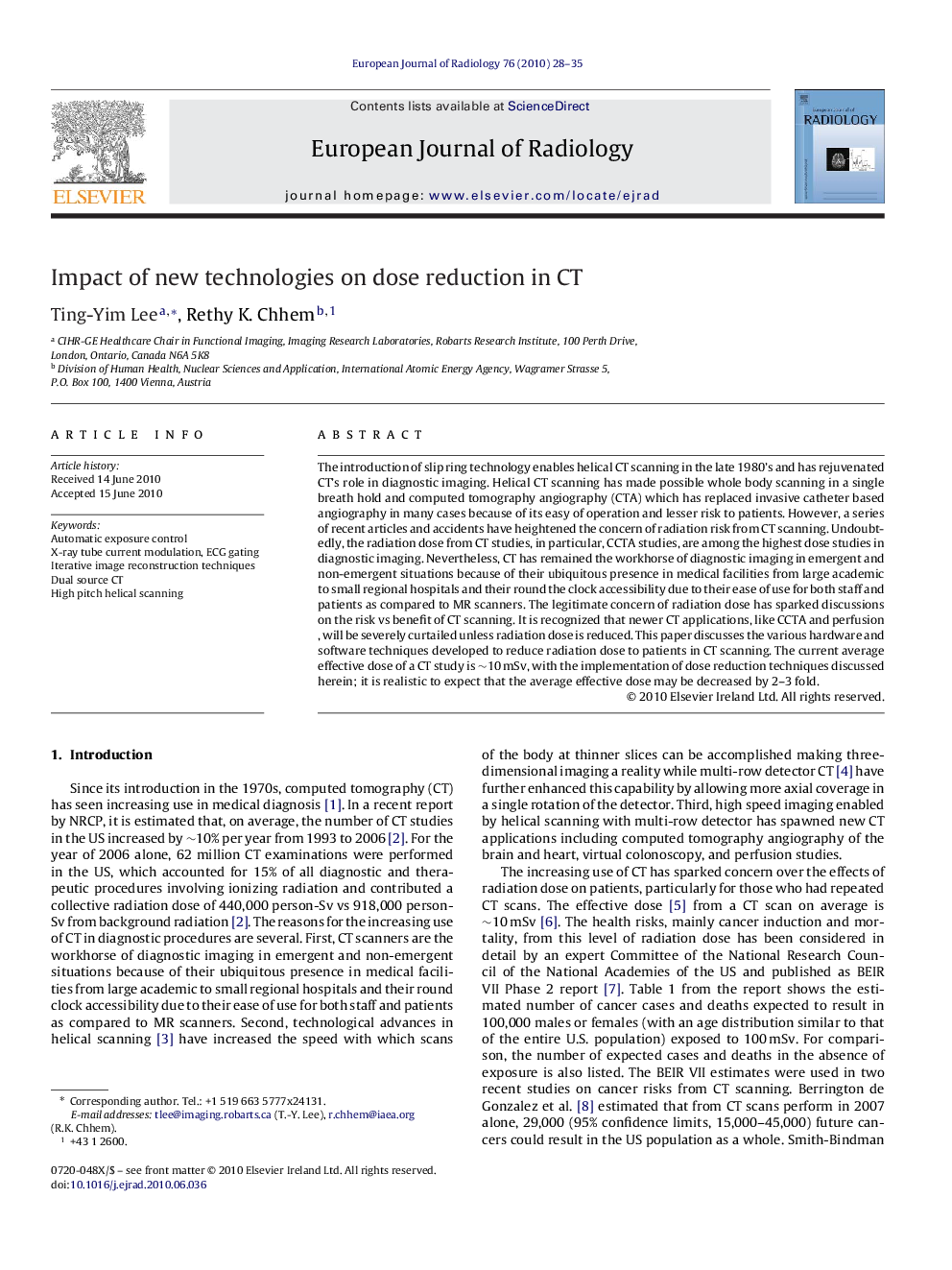| Article ID | Journal | Published Year | Pages | File Type |
|---|---|---|---|---|
| 4226402 | European Journal of Radiology | 2010 | 8 Pages |
The introduction of slip ring technology enables helical CT scanning in the late 1980's and has rejuvenated CT's role in diagnostic imaging. Helical CT scanning has made possible whole body scanning in a single breath hold and computed tomography angiography (CTA) which has replaced invasive catheter based angiography in many cases because of its easy of operation and lesser risk to patients. However, a series of recent articles and accidents have heightened the concern of radiation risk from CT scanning. Undoubtedly, the radiation dose from CT studies, in particular, CCTA studies, are among the highest dose studies in diagnostic imaging. Nevertheless, CT has remained the workhorse of diagnostic imaging in emergent and non-emergent situations because of their ubiquitous presence in medical facilities from large academic to small regional hospitals and their round the clock accessibility due to their ease of use for both staff and patients as compared to MR scanners. The legitimate concern of radiation dose has sparked discussions on the risk vs benefit of CT scanning. It is recognized that newer CT applications, like CCTA and perfusion, will be severely curtailed unless radiation dose is reduced. This paper discusses the various hardware and software techniques developed to reduce radiation dose to patients in CT scanning. The current average effective dose of a CT study is ∼10 mSv, with the implementation of dose reduction techniques discussed herein; it is realistic to expect that the average effective dose may be decreased by 2–3 fold.
